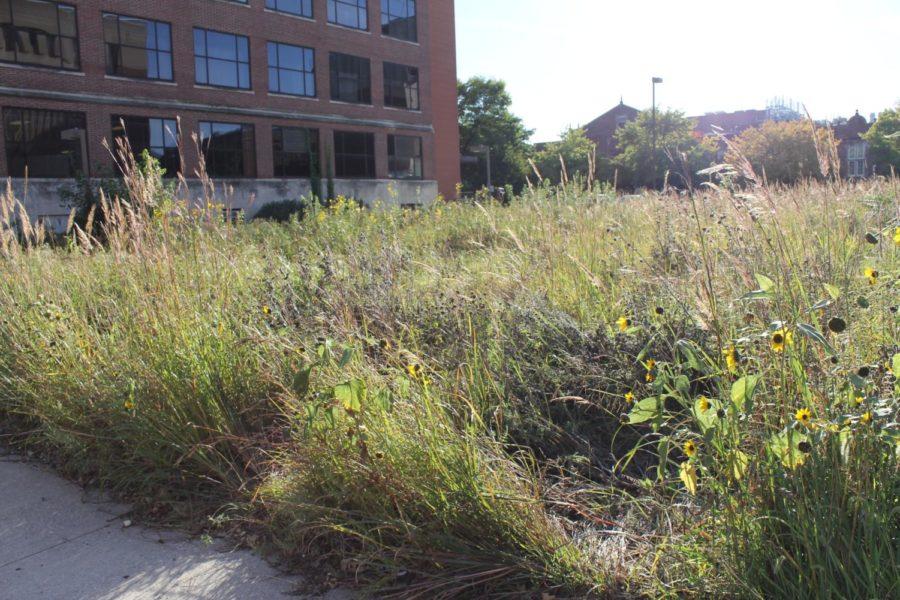Prairie provides hands-on experience
On Sep. 22, the prairie is right behind the Science I building and right next to the parking lot.
September 24, 2014
In April 2012, a group of graduate students began to develop a prairie in order to create the perfect ecological environment.
The land was originally the location for the Oakridge Feeding Supply. The graduate students discovered the land while looking at a map from the 19th century.
The focus for the prairie from the beginning has been education and how student’s can tailor their experiences with the land to benefit their ecological studies.
Brent Mortensen, graduate student in ecology, came to Iowa State to answer the question that inspired him to study ecology and the evolution of biology: How can different species coexist with one another?
The prairie was the answer to his question.
“Early on, we started with the English department undergraduate students. English professors would assign proposals on how to use the site,” Mortensen said. “We even have expanded to the College of Design and lab work for Biology classes. Also, many students are interested in the work we do and how they can help.”
Ames residents who lived near the Oakridge Prairie have also approached the graduate students to help maintain the prairie. Interaction between the community and the public gives the prairie a larger audience and more volunteers, Mortensen said.
Lauren Sullivan, graduate student in ecology and evolution and organismal biology, also played a part in the creation of the prairie. Her research focus is on plants — how plants migrate and what conditions are best for seed dispersal.
“The prairie gives students the opportunity to conduct research, good education for classes and for your own knowledge,” Sullivan said about the benefits of the prairie. “It’s a great source for the native ecosystems of Iowa.”
The Oakridge Prairie has many different plant and animal species.
However, in order to maintain the prairie, a couple of changes need to be made. Next year, the prairie will be burned and dead plant material will be cleared out, killing the invasive species that affect it.
“To keep this going as long as we can, we want this to be a long-time thing so we can collect data,” Sullivan said. “We need to connect the pieces together in order to see a better interaction between humans and the environment.“
Mortensen and Sullivan said they will not always be at Iowa State and be able to maintain the prairie. However, Sullivan also said that if students wanted to join the team, contact Lauren Sullivan at [email protected] or Brent Mortensen at [email protected].

















